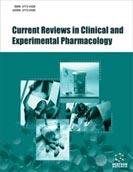Abstract
Background: Opioid-sparing strategies are recommended, and Opioid-Free Anaesthesia (OFA) is proposed in the literature. But few data exist about the feasibility of OFA in the routine practice. From a larger series of 21,463 patients receiving OFA, this work investigates the postoperative pain and related outcomes in patients undergoing laparoscopic hysterectomy.
Materials and Methods: This matched retrospective study concerned 521 patients scheduled for a laparoscopic hysterectomy between 2010 and 2015 (118 receiving OFA and 403 receiving anaesthesia with opioids, AO). Primary outcome was pain in the Post-Anaesthetic Care Unit (PACU).
Results: Among the 521 included patients, 403 received sufentanil (mean±SD: 0.1±0.05 mcg/kg), the only synthetic opioid used to balance anaesthesia. Concerning the 118 patients receiving OFA, most of them received an association of clonidine (97%) and ketamine (95%). Most of the patients in both groups received non-steroidal anti-inflammatory drugs. No difference in pain scores was observed between AO and OFA (median [IQR], respectively: 4 [0-5] vs. 4.5 [0-6], P=0.74). A difference in the perioperative morphine equivalent use was observed (mean±SD: 0.18±0.06 mg/kg vs. 0.09±0.06 mg/kg, P<0.001). No difference was observed regarding the nausea/vomiting incidences, use of anti-emetics, sedation scores, or time spent at the PACU.
Conclusion: Coming from an extensive daily practice, these data show that OFA is feasible and not associated with higher pain scores or longer PACU stay, suggesting the absence of specific immediate complications.
Keywords: Opioid-free anaesthesia, cancer, urinary retention, pruritus, intraoperative opioids, remifentanil.
Graphical Abstract
[http://dx.doi.org/10.1097/ACO.0000000000000485] [PMID: 28590258]
[http://dx.doi.org/10.1213/ane.0b013e318168b2ce] [PMID: 18420872]
[http://dx.doi.org/10.1097/00000542-200008000-00019] [PMID: 10910490]
[http://dx.doi.org/10.1093/bja/aes247] [PMID: 22831889]
[http://dx.doi.org/10.1097/00000542-200507000-00022] [PMID: 15983467]
[http://dx.doi.org/10.1016/j.coph.2011.10.018] [PMID: 22078436]
[http://dx.doi.org/10.1016/j.annfar.2009.07.078] [PMID: 19717275]
[http://dx.doi.org/10.1016/j.jclinane.2017.02.003] [PMID: 28372656]
[http://dx.doi.org/10.1016/j.bpa.2017.07.001] [PMID: 29739541]
[http://dx.doi.org/10.1016/j.bpa.2017.07.002] [PMID: 29739538]





























